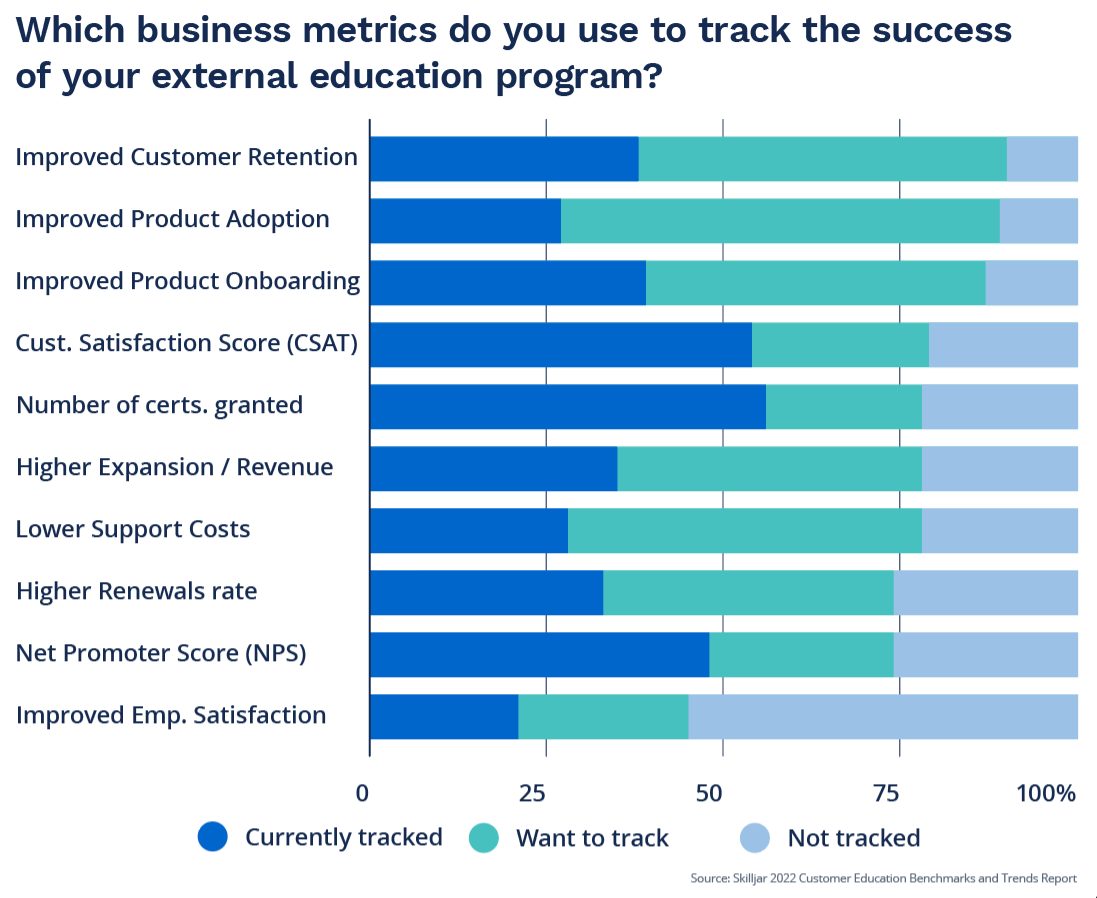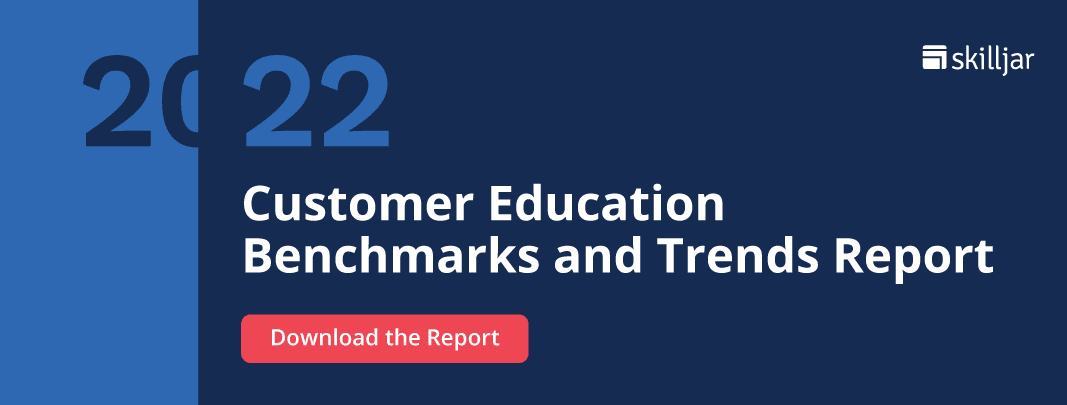Time and again, Skilljar has found that trained customers are your best customers. This sentiment reigns true in our findings from the 2022 Customer Education Benchmarks and Trends Report, a comprehensive report of insights from customer and partner education professionals, combined with an analysis of anonymized and proprietary hosted data. This industry-leading report uncovers what is driving customer education program success, including trends related to budgets, content formats, monetization strategies, course completion rates, team organization, and more.
The biggest takeaway we learned from this year’s data is that customer education plays a critical role in accelerating product adoption and improving retention.
Here are some of our key findings and overall takeaways on the state of customer and partner education in 2022.
Key Highlights From the 2022 Customer Education Benchmarks and Trends Report
Increasing Customer Training Budgets
The budget that a company sets aside to fund a program is a sign of how much that organization recognizes the value that the program provides. We were pleased to see that companies are increasing their support and investment in customer and partner education programs.
75 percent of survey respondents indicated they secured a budget increase for 2022.

Why? As the recognized value of customer education grows, companies are more willing to increase program budgets. Investments in customer education rise when more companies depend on education as a crucial strategy for efficient product adoption, and see it as a cost-effective way to support customers and protect their revenue from churn. Education program metrics demonstrate increased customer engagement and growth in product knowledge, but the biggest driver of recognized value is when program owners tie education to revenue.
“The value of investing in customer education is clear. Trained customers are your best customers, because they are more satisfied, renew more often, and cost less to support. Companies who deeply value their customers realize the power of learning to drive better business outcomes.” – Sandi Lin, CEO and Co-founder of Skilljar
Increased Focus on the Relationship Between Customer Education and Revenue
One of the sticking points about proving the value of education programs is around revenue. Implementing a full education program, including a learning management system (LMS), is not a light-hearted decision for most organizations and is one that requires buy-in from internal stakeholders, including leadership.
But if you can correlate education metrics to business outcomes you have a greater chance of proving the value of training and setting your customers up for continued success.
Our research revealed that educators’ greatest focus area with regards to metrics is to improve how they measure the total revenue impact from training. Over 70 percent of respondents plan to do more to measure the multiple ways that customer education influences revenue and profitability, which includes revenue expansion, retention efforts for trained accounts, and support ticket deflection. While many companies monetize at least a portion of their training offerings, more companies are seeing that the financial impact goes beyond the direct revenue earned from training courses and certification exams. The key is to bring the data together to measure that business impact.

“Training is not a cost center when you are teaching your customers how to use your product better. As customer education teams mature, more and more are tying education metrics directly to revenue and cost savings. Skilljar is easily integrated with its customers’ existing tech stack to make these insights accessible and actionable.” – Sara Barnes, VP of Customer Success, Skilljar
Growing Importance of LMS Integrations to Demonstrate ROI
Creating the right tech stack to support your education program is no longer a nice-to-have, but a must-have. Organizations are connecting more of their customer tech stack with their education programs because of the growing emphasis on education and the increased need to show value across their business.
Compared to the findings from our 2020 Benchmarks Report, the 2022 Benchmarks Report saw a four-fold increase in the percentage of companies with five or more LMS integrations.

Integrating your LMS with the rest of the customer tech stack affords your users a seamless user experience, and on the back end, provides your education team and decision-makers with real-time data and insights they need to make business decisions. It also makes it easier for other parts of an organization to weave education into their activities, such as promoting training via a marketing automation campaign or an in-app message that directly links a user with the material that will help them master a relevant topic.
Our research also revealed the most common integration types used by organizations today. Of those businesses with at least one LMS integration, the majority integrate with the CRM (58%), followed by Secure access/SSO (45%).

Combining training data with other customer success and support data gives you valuable insights into your program and helps you recognize areas to improve your business. It is also incredibly useful for demonstrating the value your education program provides to the broader organization.
Customer Training in 2022 and Beyond
One thing is clear from our 2022 Report: the value and influence of customer education programs is growing.
Companies across multiple industries are proving the value of education programs by tying trained customers to strategic business outcomes such as faster time to value, increased customer retention, and customer satisfaction.
Beyond education impacts in 2022, organizations have action plans in place to improve their programs in the future:
- Video is the #1 format for increased investment that companies plan to make next year.
- 61% of respondents that do not currently charge for training, plan to do so in the future.
- 40% of organizations with an LMS plan to integrate with a CRM in the future, followed by a Knowledgebase (34%) and Surveys & Quizzing software (32%).
Learn how you stack up against your peers with the most up-to-date industry benchmarks and use this information to demonstrate the value of customer education programs at your organization.
